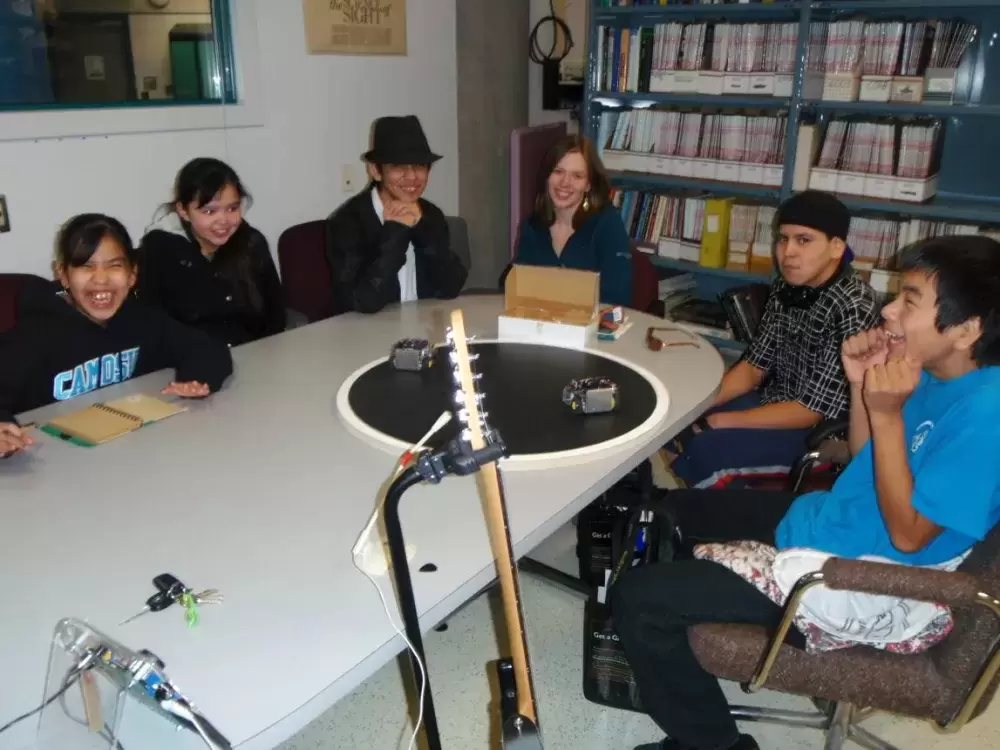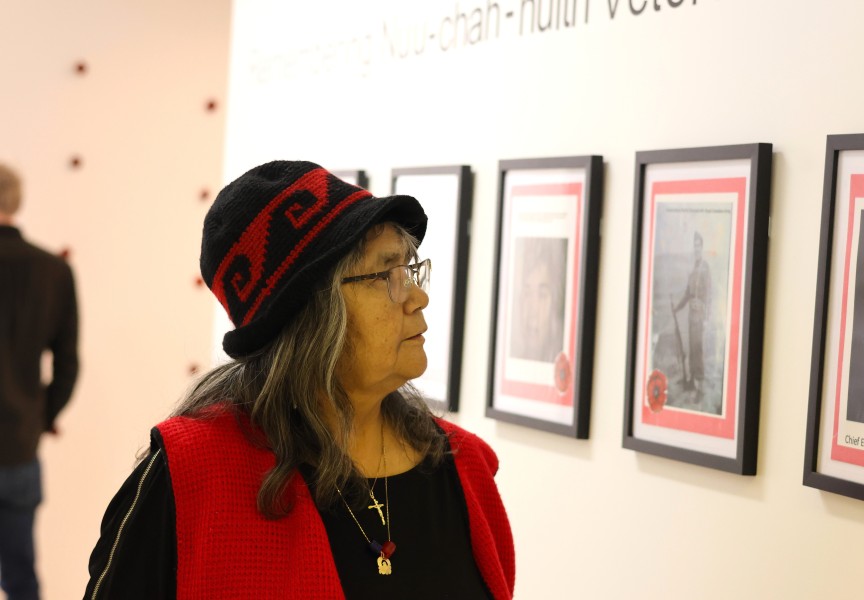The room is hushed. Teachers, computer science experts, Aboriginal advisors, and Aboriginal youth lean forward, captivated by the colorful animation projected on a screen.
This final presentation and awards ceremony represents the accumulated efforts of a growing list of partners, all eager to inspire Aboriginal youth, all working to support Aboriginal identity through the AborigiNal Computer Education through STORytelling (ANCESTOR) project. There is a dual goal: to encourage Aboriginal cultural storytelling and to introduce computer programming as a career option.
Introducing computer programming skills
“The students were so actively engaged they did not even realize they were learning,” said Cora Oliver, teacher of the Grade 7 to 10 students experiencing the ANCESTOR pilot project as part of their career elective course at LÁU,WELNEW Tribal Schoolin Brentwood Bay, 15 kilometres north of Victoria.
“It was lots of fun,” said Julia Bill, Grade 8 student. She chose to animate the WSΆNEĆ myth of Thunderbird, dragging and dropping visuals such as native people, bushes and trees into a working canvas, then adding conversation bubbles and simple animated movements.
“I want to be a teacher and I’d like to teach students how to show their stories.”
Another student, Brandan George, had big dreams, working on many projects. The animation he chose to show is an interactive game with arrows shooting through the forest at a Taurus figure. “Translating arm and arrow movement into animation involved an incredible level of problem-solving and I’ve seen it spill into other parts of his education such as improvement in math. He has turned into the classroom problem-solver,” said Oliver.
A growing list of enthusiastic partners
The ANCESTOR project began as a small idea by a member of Camosun's Computer Sciencefaculty to encourage more Aboriginal students to consider a career in computing. An opportunity for some funding by the Natural Sciences and Engineering Research Council of Canada (NSERC) PromoScience program caused this small idea to grow.
A contact with the Aboriginal Education & Community Connections department led to an even bigger idea, and ultimately a successful grant application.
Fundamental to the project was the open-source ALICEsoftware created by Carnegie-Mellon University. The project team realized the 3D graphics and a drag-and-drop interface could facilitate an engaging first programming experience, as well as a bridge between technology and ancient culture. However, missing in the existing repository of 1,500 US-based images was a gallery of culturally appropriate West Coast and Aboriginal images and sounds. Without the availability of images such as salmon, raven and thunderbird, Aboriginal students would be unable to represent their own cultural legends.
The $54,000 NSERC grant defined the project’s potential: building a sufficiently large repository of images and sounds, developing curriculum to guide teachers in providing the ANCESTOR package to Aboriginal students, and delivering three years of pilot projects to a variety of urban and remote Aboriginal communities.
This could not be accomplished without help. Enter more partners: Computer Science student teams to develop curriculum and build sample stories and games; the Art Institute of Pittsburgh, who developed 3D mink, marten, otter and racoon models required for the example Kwakwala legends; the University of Hawai’i at Hilo, also interested in sharing curriculum and developing Indigenous images; the Vancouver Island Consortium of Indigenous Arts; and U’Mista Cultural Centre in Alert Bay, BC.
The project continues to inspire new interest and directions. A current BC Campus proposal may enable students at Emily Carr University of Art and Design in Vancouver to create further images, and researchers from Carnegie-Mellon University to work with the teachers.
Also planned are meetings with Elder language-keepers to record Aboriginal words as options within the ANCESTOR cultural repository.
Endless possibilities
“Our first pilot has been very successful,” said Dr. Marla Weston, Camosun computer science instructor and a project leader. Discussions are underway to bring subsequent and expanded ANCESTOR pilots to BC tribal schools in Alert Bay, Bella Bella, Alexis Creek and Sooke during years two and three of the funding.
“We are developing curriculum to help teachers walk through the ALICE program with their students,” said Troy Verrin, one of original capstone students and now so committed he has become “Johnny on the spot” for the LÁU,WELNEW students. Also in the works is a stand-alone package distributing both software and lessons through a platform such as Moodle from a single server, enabling the ANCESTOR project to benefit remote communities without reliable internet connections.
Camosun is committed to creating seamless transitions from high school to college, as well as creating partnerships with First Nations communities.
“There are endless possibilities going on here,” said Dianne Biin, Indigenous Faculty at Camosun, who is also supporting the delivery of this project.
“Some of my students barely knew how to send an email,” said Oliver. “Now look at them.”
“I want to do another one now,” said student Andy Smith-Harry, after displaying the WSΆNEĆ myth of the creator turning into a blue jay, as told to him by the Elder, Mrs. Elliot. He had taken the extra effort to record accompanying words. “It’s a good way of telling our stories.”
“We hope some of you may consider pursuing computer science,” said Weston, addressing the smiling group of young Aboriginal students now turned amateur computer technicians.
For more information on the ANCESTOR program, contact Dr. Marla Weston at Weston@camosun.bc.ca.







